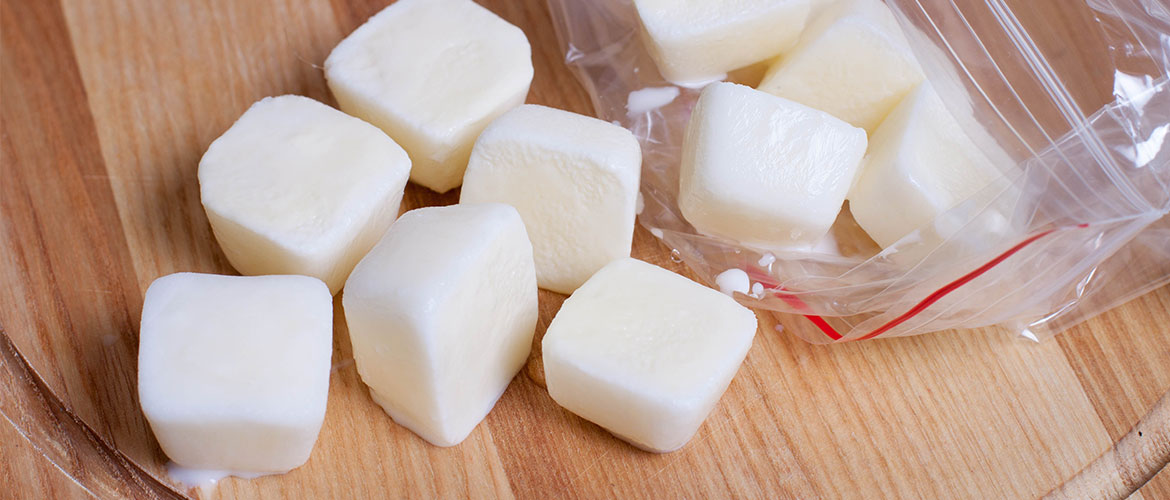Using your freezer is one of the best ways to save money and reduce food waste. It’s also a great way to store meals and smoothie ingredients you prep in advance.
But can you freeze dairy foods? What’s the best way to preserve their taste?
Each dairy product is a bit different:
Milk
Milk can be frozen, but this method of storage is not ideal. Freezing does not harm the milk but does cause the milk to separate, changing its texture and appearance. If you must freeze milk, divide it among smaller containers and ensure there is extra space in the container to allow for the liquid to expand. Thaw in the refrigerator, then shake or stir thoroughly before using. Try freezing milk in ice cube trays and using those frozen milk cubes in an iced coffee or smoothie. Looking for other clever ways to use your milk? We’ve got 20 ways here.
Cheese
Cheese can be frozen at 0ºF or lower, but it may become mealy and crumbly when thawed, so thawed cheese is best used on salads or in cooked dishes – preferably as soon as possible after thawing. Some cheeses are better frozen than others; for instance, blue cheese varieties like Roquefort and Gorgonzola are generally used crumbled anyway and a softer cheese like shredded mozzarella freezes well and is often used in cooked dishes (lasagna or pizza anyone?) Other cheeses like Parmesan and Romano can be stored in the refrigerator for prolonged periods, so freezing is unnecessary.
Yogurt
Freezing yogurt is safe, however, freezing will change the consistency and quality of the product. In some cases, freezing yogurt – specifically if planning to use in smoothies or as a frozen treat – may be preferable. Just make sure to use the frozen yogurt within four months.
Butter
Butter can be frozen in its original wrapper for several months at 0ºF. Unsalted butter can be kept frozen for about five months and is best kept frozen until ready to use. Salted butter can be frozen for about six to nine months. For longer freezer storage, wrap in foil or plastic.
Cream
Freezing is not recommended for unwhipped cream but once whipped, cream may be frozen. Place dollops of whipped cream on waxed paper and freeze. When frozen, wrap individually for use as needed.
Want more ideas on getting the most from your groceries? Here are three tips for cooking with what's in your fridge.




